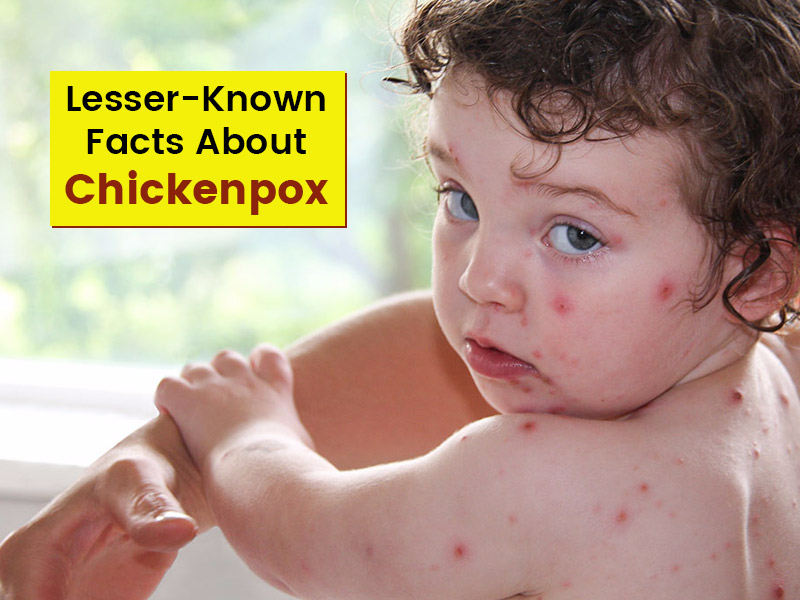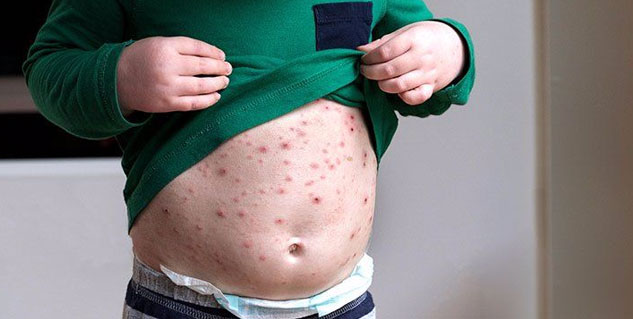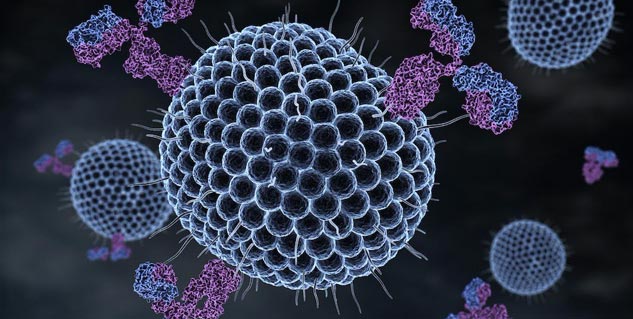
There are some infections that are prominent in children and at younger age. Chicken pox is a viral disease that is usually known by most of the people. But still it has a lot of misconceptions attached to it. Chickenpox causes rashes or red spots on the skin. In the earlier day, this disease was known to be inevitable in children, however things have changed over the years. It is still a very common disease though and could controlled or prevented by taking a chickenpox vaccination. Today, we will talk about some lesser-known facts about chickenpox that might help you know about this disease in a better way and prevent you from wrong misconceptions and aids.
Table of Content:-
5 Lesser-Known Facts About Chickenpox
1. Itchy, red rash is the most evident sign of chickenpox
If you are infected with chickenpox, it appears to be extremely itchy in condition and can cause red rashes throughout your skin. These blisters are typical signs of having chickenpox, it starts from the face and goes through trunk and then to the rest of the body. Red rashes can grow anywhere during chickenpox, especially fluid filled blisters to scabs. Symptoms of chickenpox can include headache, fatigue and fever. People might even feel sick for five to ten days in this.

2. Chickenpox is highly contagious
Even though majority of people know it, but just to confirm, chickenpox is highly contagious in nature. It can be spread because of touching the infected fluid present in the chickenpox blisters. A person can infect another child or person just by coming in contact with that person at any sort. It can spread because of sneezing, coughing or touching the child with chickenpox. If you get exposed to zoster virus, then you might get symptoms of chickenpox within 10-21 days of the infection. It is better that child stays in temporary isolation for the time being.
Also Read- Brain Hemorrhage or Bleeding: Types And Effects You Should Know About
3. Chickenpox occurs mild in some cases and serious in a few
The catch is that chickenpox is usually not a very severe disease and gets treated within a few days by some medications and remedies. However, some children develop itchy rashes, fever, fatigue but it creates more of a nuisance than any particular danger. It results to dehydration, pneumonia and bleeding issues in some cases that might be very problematic. Some other complications of chickenpox can include-
- Toxic shock syndrome
- Bone and joint deformities
- Skin infections
- Brain swelling
- Bacterial infections
- Bleeding problems
4. Chickenpox is not so common now
It is a fortunate fact that chickenpox disease is not such a common disease now, thanks to the vaccine and lower rate of virus in the air. Chickenpox was first introduced in 1995 and there were more than 4 million cases every year. Around 90% of the children contracted with this viral disease and it could cause major symptoms in the babies. The only way to keep this number low is to get vaccinated of chickenpox in early days of development.
Also Read- 6 Signs That Your Diet Is Harming You More Than Helping
5. Vaccine is still the best defense against Chickenpox
Vaccine remains one of the primary solutions to prevent the risk of falling for this viral infection. It is still the best way to protect your child from contracting chickenpox and therefore all the new parents must get their children vaccinated. According to Americal Academy of Pediatrics, there has been a decade and a half that suggests that vaccines were effective in treating children with chickenpox. The efficacy rate currently according to study is around 80-85%. But vaccinated children and adults might even get chickenpox even after that but chances are very low.
Most of the cases that occur after vaccination of this viral disease tend to be milder than usual. It typically has fewer than 50 blisters and can cause mild or no fever. Their rate of recovery is also faster than other people getting infected without chickenpox vaccine.
Picture Credits- pexels.com
Also watch this video
How we keep this article up to date:
We work with experts and keep a close eye on the latest in health and wellness. Whenever there is a new research or helpful information, we update our articles with accurate and useful advice.
Current Version
